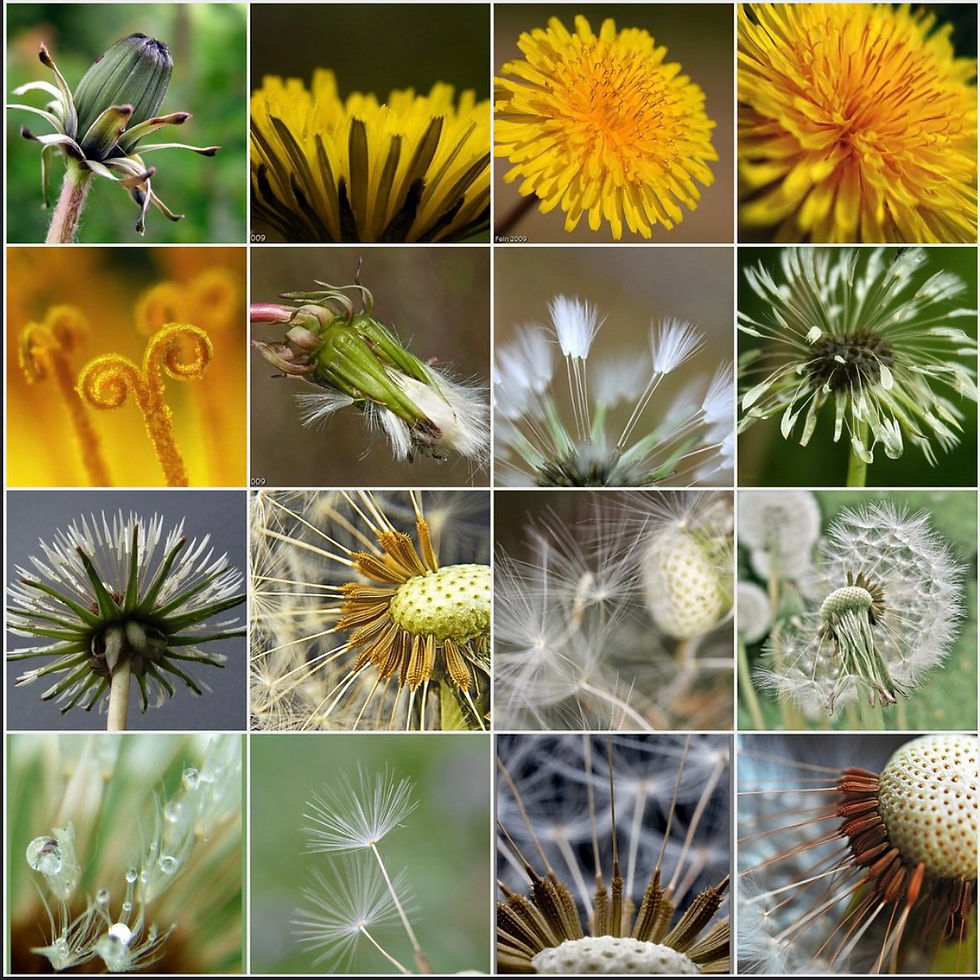Click the tartan to view its entry in The Scottish Registers of Tartans which includes registration details, restrictions, and registrant information.
Unregistered tartans may link to one of the web's online design environments for similar information.
For any questions about reproduction of designs or weaving of these tartans, please contact the registrant directly or via this website.
Dandelion Day
"O dandelion, rich and haughty,
King of village flowers!
Each day is coronation time,
You have no humble hours.
I like to see you bring a troop
To beat the blue-grass spears,
To scorn the lawn-mower that would be
Like fate’s triumphant shears.
Your yellow heads are cut away,
It seems your reign is o’er.
By noon you raise a sea of stars
More golden than before."
~ The Dandelion, Vachel Lindsay (1879-1931)
Make a wish! If weeds there must be, why not the happiest of childhood flowers, the lion-toothed dandelion! Few other flowers provide the thrill of "making wishes" or marking time by blowing off the seeds of the "dandelion clocks"! In medieval Europe, it was thought that blowing the seeds of a dandelion globe could carry your thoughts and dreams to loved ones, or even predict the number of years until your marriage based on the number of breaths it took to blow them all away. Used by humans for food and as a medicinal herb for much of recorded history, the entire plant, including the leaves, stems, flowers, and roots, is edible and nutritious! Dandelions are believed to have arrived in North America on the Mayflower—not as stowaways, but brought purposefully for their medicinal benefits. They have since naturalized and found their way into front yard lawns, backyard gardens, and the general countryside. Dandelions are used to make the traditional British soft drink Dandelion and Burdock, and are one of the many ingredients for root beers. In floriography, the language of flowers that flourished during the Victorian era, dandelions hold meanings of love, faithfulness, and happiness. 💚 💛 🌼 💛 💚
The common name dandelion, from French dent-de-lion, meaning "lion's tooth" comes from the jagged tooth-shape of the leaves.
This common weed, the scourge of lawns for some, has a long history of use for food, drink, and medicine, as well as being used for the favorite game and pastime of blowing away the seeds to make a wish or to consult the thoughts of a loved one or to tell time.
The game of "dandelion clocks," uses the number of puffs it takes to blow away the seeds to tell time, one hour to a puff.
And to make a wish or send or divine a secret message from a loved one ... from "The Child and Childhood in Folk-Thought," by Alexander F. Chamberlain:
"Are you separated from the object of your love? Carefully pluck one of the feathery heads; charge each of the little feathers composing it with a tender thought; turn towards the spot where the loved one dwells; blow, and the seed-ball will convey your message faithfully. Do you wish to know if that dear one is thinking of you? Blow again; and if there be left upon the stalk a single aigrette, it is a proof you are not forgotten. Similarly, the dandelion is consulted as to whether the lover lives east, west, north, or south, and whether he is coming or not."
By designer Carol A.L. Martin, this tartan embodies the spring colors of the blooming dandelion.
For more legends and lore associated with dandelions, click the real dandelion.









